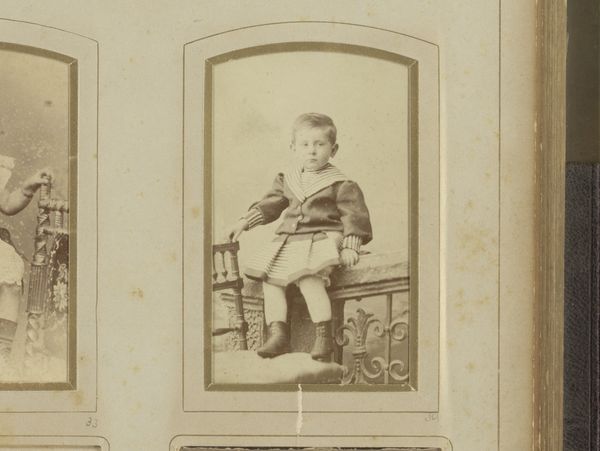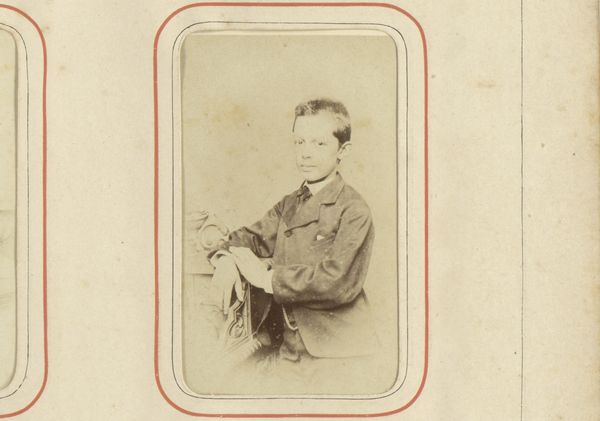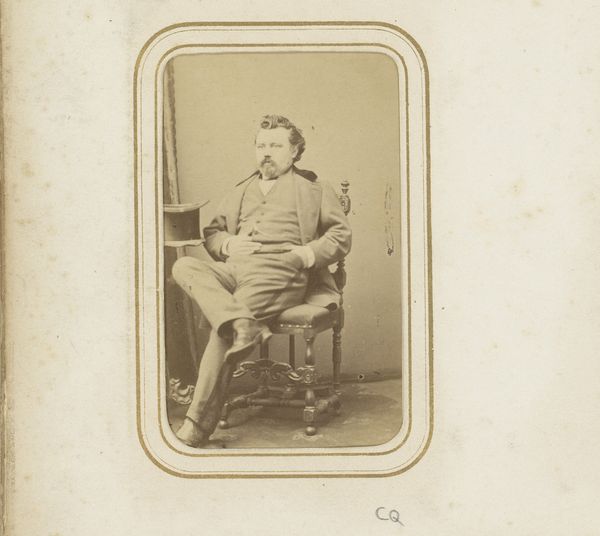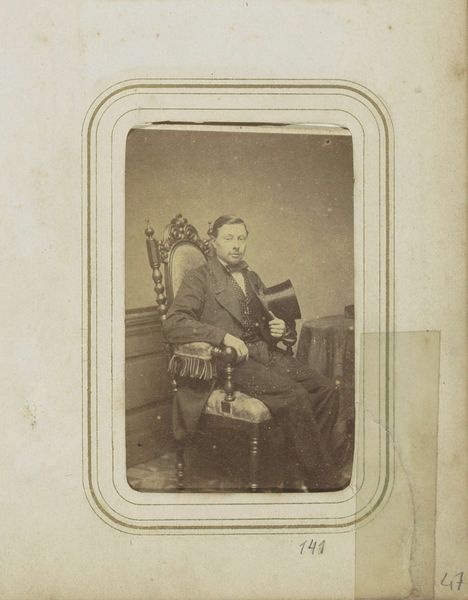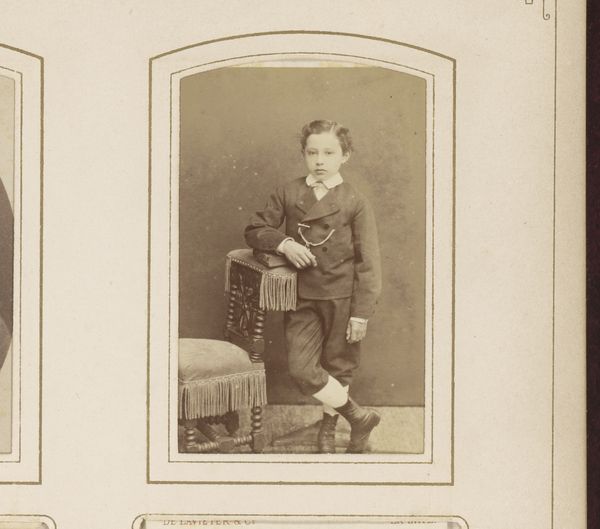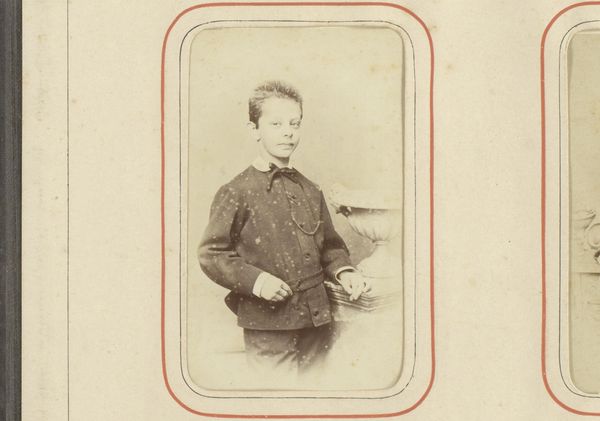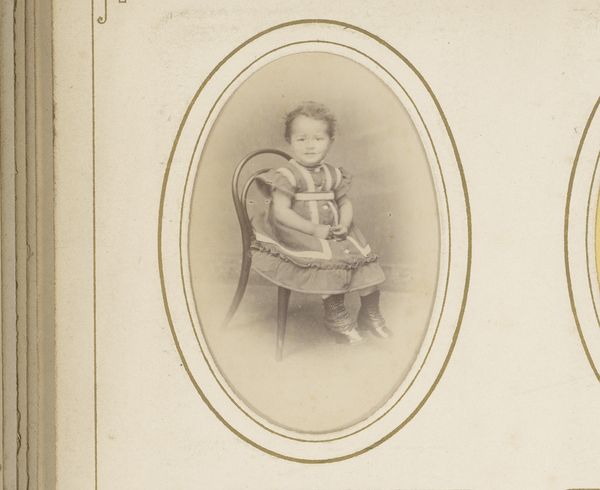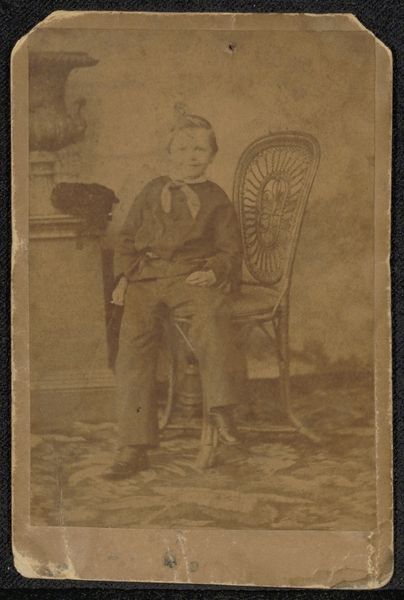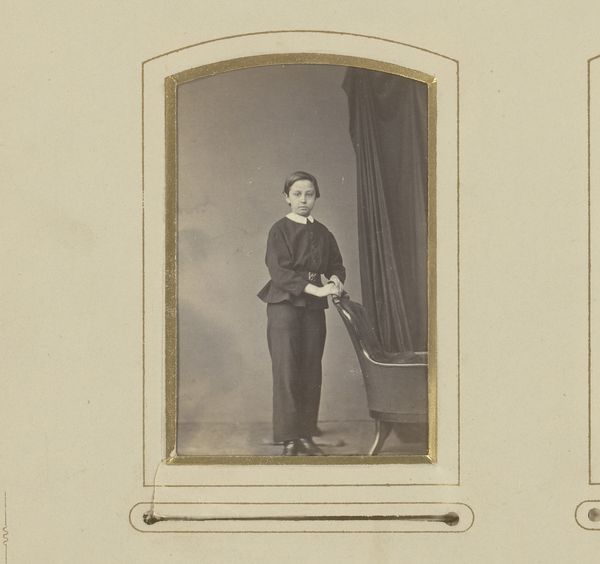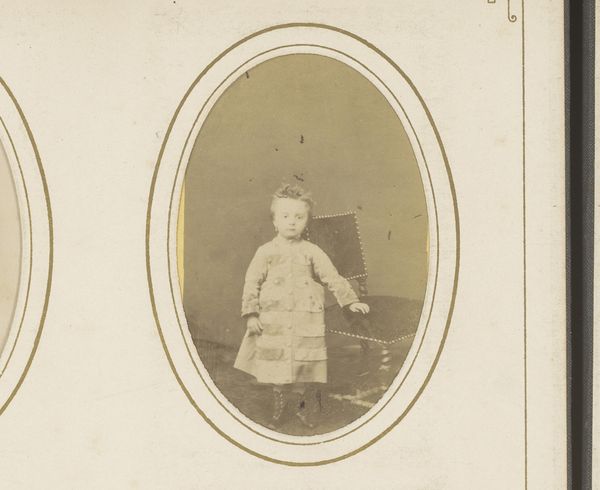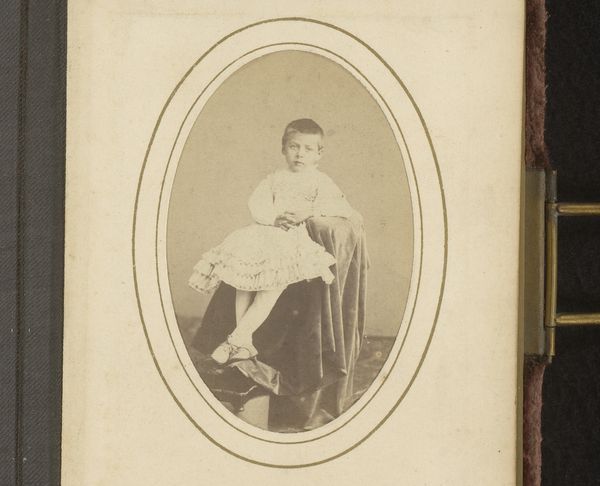
photography
#
portrait
#
photography
#
historical photography
#
19th century
#
genre-painting
Dimensions: height 103 mm, width 64 mm
Copyright: Rijks Museum: Open Domain
Editor: Here we have an ambrotype from the 1870s, titled *Portrait of an Unknown Boy*. The studio is listed as Kannemans & Zoon. There’s a rather melancholic air to it; the child seems poised but almost world-weary. What symbolic language strikes you in this photographic scene? Curator: Indeed. Notice how the objects surrounding him contribute to that feeling. The ornate chair and footstool, objects designed for comfort and status, paradoxically highlight his unease. They serve as emblems of expectation, a script of gentility he seems compelled to perform. And what does it say that this image was captured as photography began evolving in a Victorian society with children coming more into the spotlight? Editor: So you're saying the photo itself signifies a changing cultural role for children? Curator: Precisely. Early photography like this was frequently about establishing identity. What do you think about the choice to capture children this way? Editor: I suppose I see a parallel with classic paintings: children dressed as small adults in a rigid pose and a staged background. This must represent childhood through the vision of adults and the culture they built. Curator: Absolutely. Consider the symbolic weight of those images and how they continue to influence our perception of childhood, memory and even photography. What are some other connections between symbols from Victorian photography versus modern representations of family? Editor: This makes me consider how much our idea of childhood is constructed, how much of it is imposed by a specific moment. Very thought-provoking! Curator: It is a beautiful visual encoding, isn’t it?
Comments
No comments
Be the first to comment and join the conversation on the ultimate creative platform.
